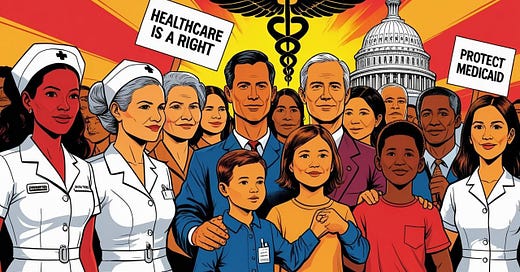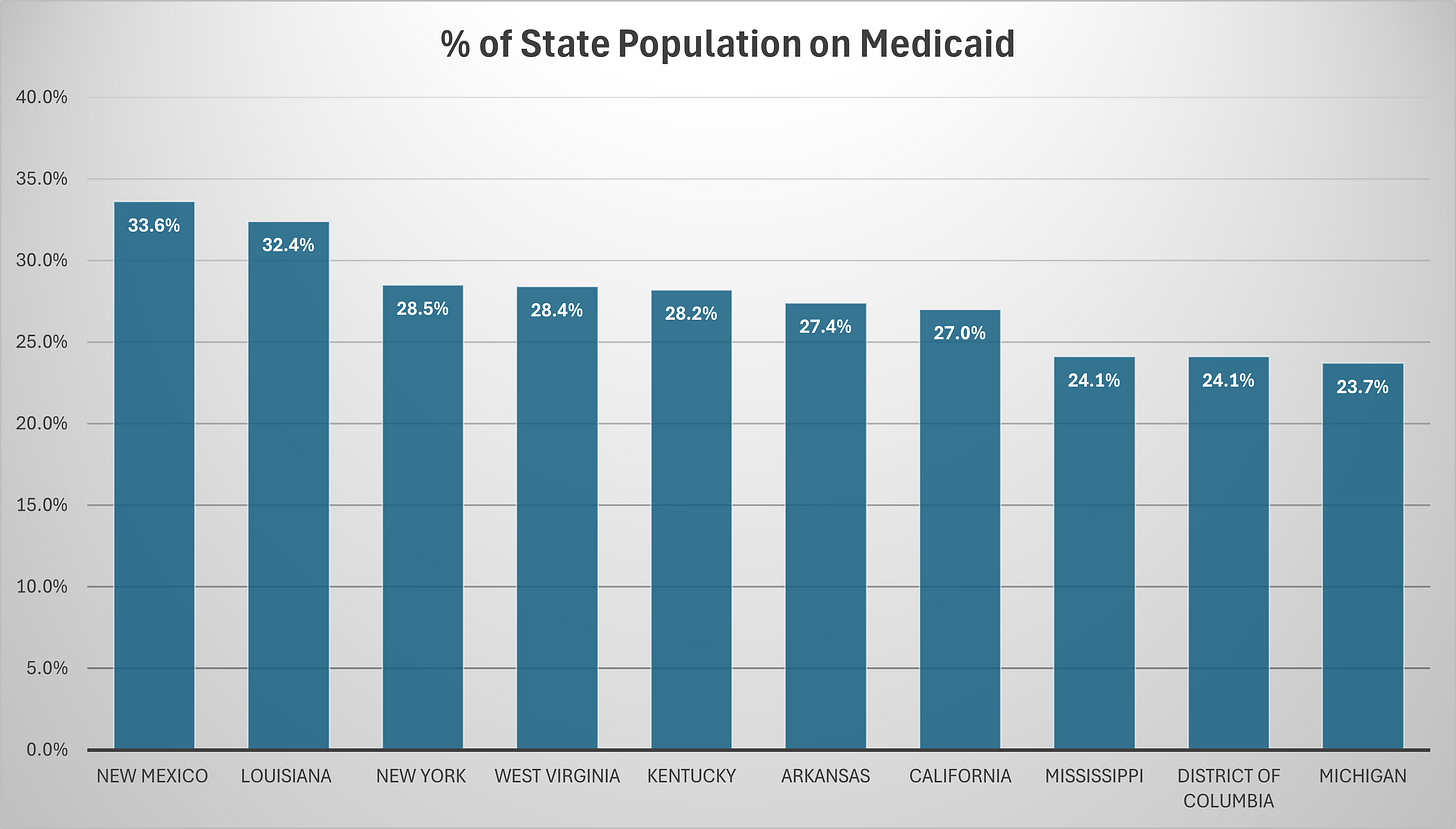The Politics of Medicaid
Medicaid is often at the center of political debates over funding, eligibility, and the program’s future. Proposed budget cuts or policy changes could have far-reaching consequences, especially for pregnant people, children, and those with chronic health needs. Experts warn that reducing Medicaid’s reach would worsen health disparities, increase medical debt, and threaten the viability of safety-net providers.
Medicaid was created in 1965 as part of President Lyndon B. Johnson’s Great Society initiative to address the growing need for health coverage among Americans with limited income and resources. Rising medical costs, a growing elderly population, and gaps in existing health programs left millions without access to affordable care. Authorized by Title XIX of the Social Security Act, Medicaid was designed as a joint federal-state program to provide medical assistance to low-income families, children, pregnant women, seniors, and people with disabilities. Its goal was to help states offer health insurance to those who could not afford private coverage, reducing disparities and improving public health nationwide.
Medicaid is often described as the backbone of America’s healthcare safety net, covering more than one in four Americans and accounting for approximately one-fifth of the nation's total healthcare spending. It covers more than 40 million children, about four in ten births nationwide, along with two million veterans, millions of people with disabilities, and a significant share of older adults who rely on Medicaid to afford long-term care. Its reach, scope, and impact make it one of the most important yet frequently misunderstood aspects of the US healthcare system.
Medicaid covers a broad range of health services that many private insurers do not. Enrollees have access to doctor visits, hospital care, prescription drugs, mental health services, preventive screenings, dental and vision care, long-term services and supports, as well as home and community-based care for individuals with chronic conditions or disabilities. Preventive services, including cancer screenings, vaccinations, and wellness exams, are available at no cost to adult members, helping to detect health issues early and improve long-term outcomes. This proactive approach not only improves individual health but also reduces overall health care spending by avoiding emergency visits and hospitalizations.
Community health centers and safety-net hospitals rely heavily on Medicaid to serve their patients. Medicaid expansion has enabled these providers to expand services, modernize their facilities, and enhance care coordination, particularly in underserved and rural areas.
The states that expanded Medicaid under the Affordable Care Act (ACA) saw significant reductions in uninsured rates, uncompensated care, and preventable hospitalizations. Studies show that Medicaid expansion is associated with improved quality of care, better self-reported health, and positive behaviors, such as more effective diabetes management and increased tobacco cessation.
Notably, Medicaid expansion has led to measurable improvements in health equity, with Black and Latino populations experiencing larger reductions in uninsurance rates compared to white populations. Some studies also document improved outcomes for specific conditions, such as cardiac surgery and mental health, and a narrowing of disparities in birth outcomes for Black infants.
Current proposals in Congress aim to make significant cuts to Medicaid as part of major budget and tax legislation. The “One Big Beautiful Bill Act,” which has passed the US House, seeks to reduce federal Medicaid funding by up to $863 billion over a decade, according to estimates from the Congressional Budget Office (CBO). Medicaid cuts are a way to ensure the government can afford to lower taxes for corporations and some individuals without increasing the national debt. The CBO projects that, if enacted, these changes could result in up to 16 million more Americans being uninsured by 2034. The US Senate has faced setbacks, with the parliamentarian ruling against certain Medicaid provisions, but the overall push for major Medicaid cuts remains a central part of the legislative agenda. Critics warn these cuts would harm rural hospitals, shift costs to states, and reduce access to care for vulnerable populations.
While these proposed cuts aim to reduce federal spending on healthcare, taxpayers directly fund tens of billions of dollars each year to cover unpaid medical bills, ensuring hospitals and clinics can continue to provide care regardless of a patient’s ability to pay. The cost to taxpayers for covering unpaid medical bills, primarily through government payments to offset uncompensated care for the uninsured, averaged $33.6 billion in 2017, according to the Kaiser Family Foundation. Approximately 27 million people were uninsured during this time. At this rate, if an additional 16 million people lose insurance coverage due to Medicaid cuts, the average annual cost would increase by an additional $20 billion to nearly $53 billion. Over the course of a decade, this would result in approximately $200 billion in additional costs to the federal government.
Medicaid is more than just a government program; it is a pillar of the American health care system, delivering essential services, advancing health equity, and protecting the most vulnerable. As the nation debates the future of healthcare, Medicaid’s role as a provider of comprehensive, preventive, and equitable care has never been more crucial.





